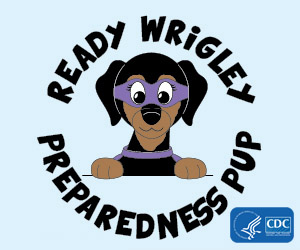On the Go in an Emergency: Stephanie’s Story
When disaster strikes, you might be at home or at a number of other places. This can make it difficult for your family to follow an emergency plan. Packing emergency supplies and information in an emergency kit can make it easier to prepare and respond during a disaster, especially if you have a child with special healthcare needs.

Lauren was with her daughter, Stephanie, in the intensive care unit at a local hospital when Hurricane Sandy hit. Stephanie has autism and recently underwent a kidney transplant, which requires her to have refrigerated medicine and to be in a climate-controlled environment at all times. When they returned home, there was no electricity or heat, and the family soon realized that they would need a generator to help care for Stephanie’s medical needs. “We first thought of a generator before her kidney transplant, but it took being without electricity to realize we really needed it,” says Lauren. These are familiar challenges faced by many families during storms and other emergencies.
Fortunately, the local fire department stepped in to store Stephanie’s medicine and offered to find her a cool, dry place to stay. Items such as coolers and ice packs can help keep medications cool for a short time, if you do not have electricity.
Now Lauren keeps a “go” bag in case of emergencies, which can easily be carried in a car, in case she is away from home during an emergency. Lauren keeps essential items in her “go” bag so that she can have everything ready in case she needs to leave quickly. A “go” bag might include:
- Personal items (toothbrush, soap, and other items used daily)
- Diapering supplies
- Medications used daily
- A list of daily medications and their dosage
- Medical records
- Cold packs
It is important for families to keep available medical supplies packed in multiple places in case of an emergency because “you don’t have time to pack when it happens,” says Lauren. Learn more about emergency planning resources for families.
